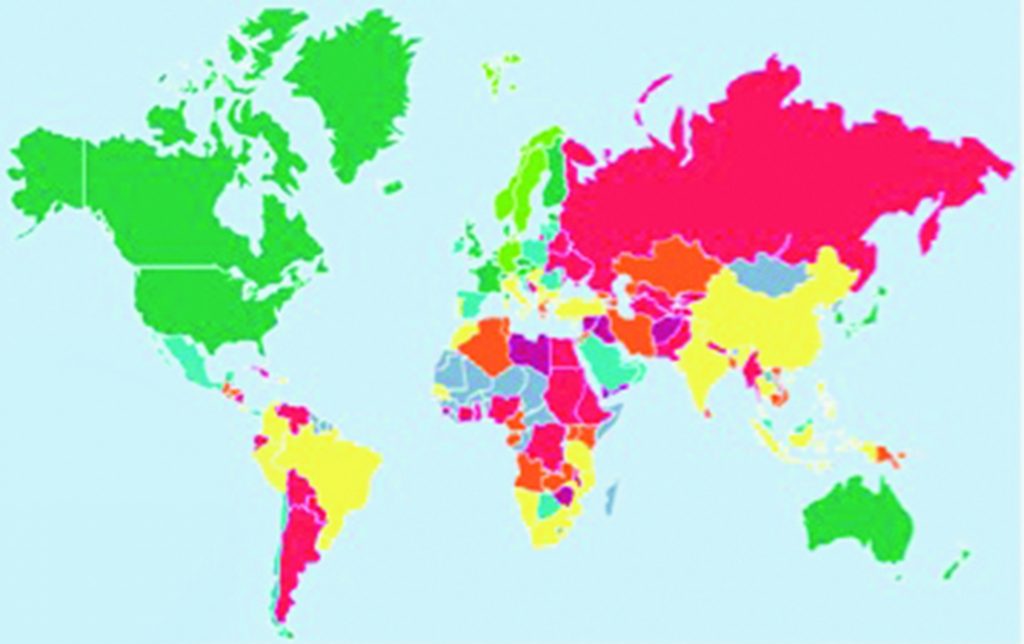Sam Achampong comments on the CIPS Risk Index, powered by Dun & Bradstreet, the global indicator of the pressures acting upon supply chains
Supply chain risk in the Middle East and North Africa remained relatively stable during the first quarter of the year, at 4.371, according to the CIPS Risk Index, produced by Dun & Bradstreet for the Chartered Institute of Procurement & Supply (CIPS). The score is high however by historical standard and compared to other regions, and underlying risk trend continued to deteriorate due to sustained low oil price and increased security risks in the region.
Globally, supply chain risk crept higher for the second consecutive quarter from 79.3 in Q4 2015 to 79.8 in Q1 2016, with Asia Pacific providing the largest risk contribution of any region. The importance of major exporters in Japan, China and Australia to global trade, make international supply chains particularly sensitive to any instability in the region. This is followed by Western Europe, contributing 30% of global supply chain risk, and the Middle East and North Africa, providing just 9% (see table).
The effects of the weak commodity price have been apparent on the short-term economic outlook for the oil-exporting countries of the Middle East and North Africa, undermining growth as government expenditure, which is a major driver of the economy, is curtailed. As a result, two of the regions oil exporting economies, Bahrain and Saudi Arabia, were downgraded in Q1. Bahrains fiscal deficit is forecast to reach 14% of GDP in 2016; compared to only 3.3% in 2014. In Saudi Arabia, the government has been selling SAR20bn of bonds every month in order to help support the fiscal deficit.
Against this negative economic backdrop, governments and companies in the region are under pressure to cut costs and many are reacting by reviewing short and medium term commitments, projects and contracts. This is affecting both local and international companies operating in the region. In Saudi Arabia during Q1, the government ordered all ministries to cut the costs of all projects they have contracted by a further 5%.
A combination of low oil prices, regional security issues and wider economic uncertainty is putting pressure on the supply chains in the Middle East and North Africa.
As governments are cutting down on costs and companies are trying to hold on to their cash; extended and protracted payment terms are becoming an issue across the region. Several business owners have told us that payment terms have been stretched from the usual six months to more than a year, making it very challenging for them to manage their business and cash flow.
Looking ahead, as governments in the region are taking steps to diversify their economies from oil and open up for cross-border investment and trade, the pressure on the budget deficits may ease. This in turn could help improve the situation around supplier payment terms.
Meanwhile, elevated security risks across the region will ensure supply chain risk remains high throughout 2016 and into 2017. Wars in Iraq, Libya, Syria and Yemen have seen radical groups such as Islamic State and al-Qaeda flourish.
On Irans reintegration into global supply chains, there are growing signs that optimism following the end of nuclear sanctions might be misplaced. European businesses are particularly nervous about doing business in Iran while Iranian business culture requires personal relationships to develop gradually before deals can be agreed. Other challenges include the domination of the economy by quasi-state organisations, under-developed financial service system, endemic corruption, and weak levels of transparency and rule of law.
Risk: Low – High
Green – low risk light to dark
Yellow – medium risk
Red to purple – high risk, light to dark

About the CIPS Risk Index, powered by Dun & Bradstreet
First launched in April 2014, the CIPS Risk Index, powered by Dun & Bradstreet, is a composite indicator of pressures acting upon supply chains globally. The Index analyses the socio-economic, physical trade and business continuity factors contributing to supply chain risk across the world, weighting each score according to that countrys contribution to global exports.
The Index helps sourcing professionals understand the risks to which to their supply chains are exposed, articulate questions and scenarios for key suppliers, inform assurance activities, check the readiness of contingency plans, support the negotiation of risk transfer in contracts, and establish factors which may impact the financial stability of tier one and sub-tier suppliers upstream. Regular production of this Index will help procurement and supply professionals communicate and justify risk-informed sourcing decisions and support effective Supplier Relationship Management.

